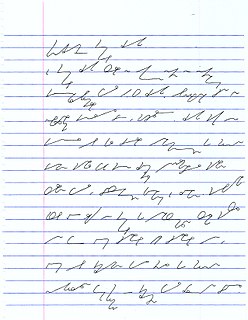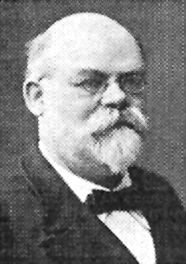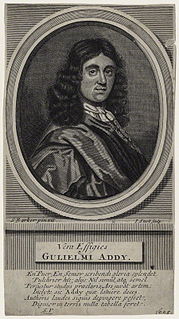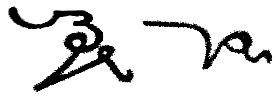This article or section appears to contradict itself on death year.(February 2022) |
William Isaac Blanchard (died 1790) was an English stenographer.
This article or section appears to contradict itself on death year.(February 2022) |
William Isaac Blanchard (died 1790) was an English stenographer.
Blanchard was the grandson of a French refugee, who resided in England. He became a professional shorthand writer, and practised his art in Westminster Hall from 1767 till his death in 1796. His offices were at 4 Dean Street, Fetter Lane, and 10 Clifford's Inn.
Blanchard was the inventor of two separate and distinct systems of stenography, the first of which he published under the title of A Complete System of Shorthand. [1] This was followed by the explanation of a more elaborate system in The Complete Instructor of Shorthand. [2] The method of stenography described in the second work was hardly practised, if praised in the Historical Account of Shorthand, under the name of James Henry Lewis. Several trials taken in shorthand by Blanchard were published between 1775 and 1791, including the trials of Admiral Keppel and John Horne Tooke.

Shorthand is an abbreviated symbolic writing method that increases speed and brevity of writing as compared to longhand, a more common method of writing a language. The process of writing in shorthand is called stenography, from the Greek stenos (narrow) and graphein. It has also been called brachygraphy, from Greek brachys (short), and tachygraphy, from Greek tachys, depending on whether compression or speed of writing is the goal.

A court reporter,court stenographer, or shorthand reporter is a person whose occupation is to capture the live testimony in proceedings using a stenographic machine, thereby transforming the proceedings into an official certified transcript by nature of their training, certification, and usually licensure. This can include courtroom hearings and trials, depositions and discoveries, sworn statements, and more.

Sir Isaac Pitman was a teacher of the English language who developed the most widely used system of shorthand, known now as Pitman shorthand. He first proposed this in Stenographic Soundhand in 1837. He was also the vice-president of the Vegetarian Society. Pitman was knighted by Queen Victoria in 1894.
Dutton Speedwords, transcribed in Speedwords as Dutton Motez, is an international auxiliary language as well as an abbreviated writing system using the English alphabet for all the languages of the world. It was devised by Reginald J. G. Dutton (1886–1970) who initially ran a shorthand college promoting Dutton Shorthand, then offered a mail order (correspondence) self-education course in Speedwords while still supporting the Dutton Shorthand. The business was continued by his daughter Elizabeth after his death.
Pitman shorthand is a system of shorthand for the English language developed by Englishman Sir Isaac Pitman (1813–1897), who first presented it in 1837. Like most systems of shorthand, it is a phonetic system; the symbols do not represent letters, but rather sounds, and words are, for the most part, written as they are spoken.
Gregg shorthand is a form of shorthand that was invented by John Robert Gregg in 1888. Like cursive longhand, it is completely based on elliptical figures and lines that bisect them. Gregg shorthand is the most popular form of pen stenography in the United States; its Spanish adaptation is fairly popular in Latin America. With the invention of dictation machines, shorthand machines, and the practice of executives writing their own letters on their personal computers, the use of shorthand has gradually declined in the business and reporting world. However, Gregg shorthand is still in use today.
Théodore-Pierre Bertin was the author of fifty-odd works on various subjects, but is primarily remembered as the person responsible for adapting Samuel Taylor's shorthand to the French language and introducing modern shorthand to France.
The Stenographers' Guild, founded in 1937, is a non-profit organization providing vocational education and training in the area of Secretarial skills, Information Technology and Shorthand. It is located in T. Nagar, Chennai in the Indian state of Tamil Nadu.

Aulay Macaulay was an 18th-century English tea-dealer, based in Manchester, who invented a system of shorthand which could be used in English and many other languages. He died on 19 March 1788, in Manchester.

Christian Heinrich Roller, better known as Heinrich Roller and also known by his pen name Roland vom Hochplateau, was the inventor of a German shorthand system. Roller was also a writer of humorist texts and a professor at the "Journalistische Hochschule" in Berlin.
Thomas Shelton was an English stenographer and the inventor of a much-used British 17th- and 18th-century stenography.

Samuel Taylor was the British inventor of a widely used system of stenography.

William Addy was a writing-master based in London, and the author of a system of shorthand published in 1685. The method, a modification of that of Jeremiah Rich, was so much practised that the Bible, the New Testament, and the Singing Psalms were published, according to its system, two years later. The 1695 edition of his work was entitled Stenographia, or the Art of Short-Writing completed in a far more compendious methode than any yet extant. It was engraved throughout. The Bible was engraved by John Sturt. In subsequent editions of the Bible the preliminary leaves were changed, and the book dedicated to King William. All the title-pages are dated 1687.
John Angell, was an Irish professional shorthand writer. Angell was from Dublin, and professor of the art there.

The Duployan shorthand, or Duployan stenography, was created by Father Émile Duployé in 1860 for writing French. Since then, it has been expanded and adapted for writing English, German, Spanish, Romanian, Latin, Danish, and Chinook Jargon. The Duployan stenography is classified as a geometric, alphabetic stenography and is written left-to-right in connected stenographic style. The Duployan shorthands, including Chinook writing, Pernin's Universal Phonography, Perrault's English Shorthand, the Sloan-Duployan Modern Shorthand, and Romanian stenography, were included as a single script in version 7.0 of the Unicode Standard / ISO 10646

Thomas Gurney (1705–1770) was an English shorthand-writer.
Joseph Gurney (1744–1815) was an English shorthand-writer and evangelical activist.

Theophilus Metcalfe was an English stenographer. He invented a shorthand system that became popular, in particular, in New England, where it was used to record the Salem witch trials.
Thomas Mark Lucas was a British educator of the blind, founder of the Royal London Society for Blind People, and developer of the Lucas tactile alphabet system, an alternative to the Braille system of reading for the blind.
. Dictionary of National Biography . London: Smith, Elder & Co. 1885–1900.